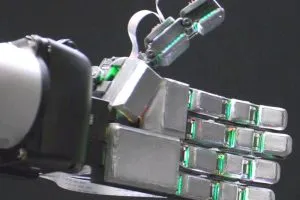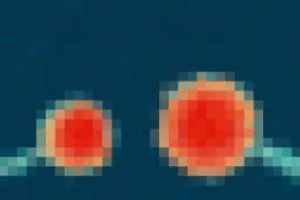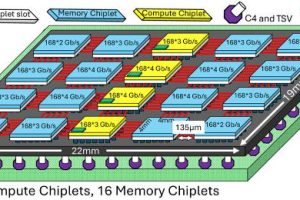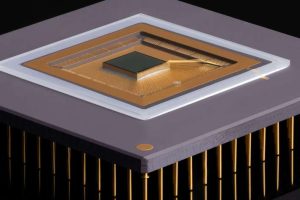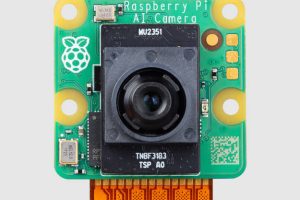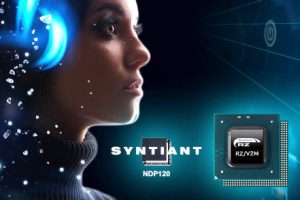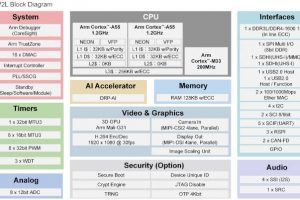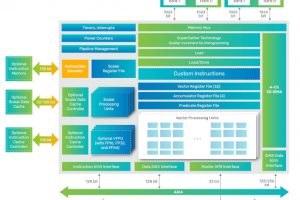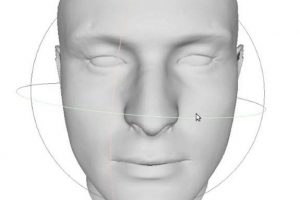F-Tac is a robot hand that can sense touch with 100μm resolution across 70% of its grasping surface, and can grasp using that touch feedback. “The spatial resolution combined with the enormous coverage are truly novel and were not possible previously,” claimed team member Professor Kaspar Althoefer (pictured), director of the Centre of Excellence Advanced Robotics at Queen Mary University, ...
image processing
24 by 32 pixel thermal camera array ICs
Melexis has created a 32 x 24 pixel far-infra-red sensor array that can photograph the temperature of objects at between -40 and +260°C. Dubbed MLX90642, it comes in a 9.3mm diameter four-lead TO39 through-hole package in two versions: a squat (5.7mm tall) 110° x 75° wide-view type (BCA suffix) and a taller (11.9mm) 45° x 35° narrow-view version (BCB). The ...
ISSCC: CPUs and image processors
The IEEE’s International Solid-State Circuit Conference in San Francisco featured an overview of next-generation high-performance CPUs. AMD revealed aspects of Zen 5, its x86-64 microprocessor for desktops and laptops. Built on TSMC’s 4nm FinFET process, the 55mm2 eight cores have a total of 8.6bn transistors. Each core has a 1Mbyte private L2 cache and there is 32Mbyte of shared L3. ...
Edinburgh start-up reveals two camera chips with single-photon pixels and DSP
Singular Photonics has spun out of the University of Edinburgh to offer two ultra-sensitive camera chips based on SPADs – single-photon avalanche detectors. Both have in-sensor digital signal processing. Development has been lead by Professor Robert Henderson, head of Edinburgh’s CMOS Sensors and Systems Group, and a pioneer of SPAD-based image sensors: he co-designed one in 2005, and in 2013 ...
12Mpixel AI image sensor from Raspberry Pi
Raspberry Pi has announced a 12.3Mpixel AI camera, based on Sony’s IMX500 intelligent sensor, which “supports on-board processing for a variety of neural network models, leaving the processor in the host Raspberry Pi free to perform other operations,” according to Raspberry Pi. Alongside the image sensor is a RP2040 microcontroller for neural network frame firmware, a DSP and ram, and ...
Voice-control of embedded vision AI for IoT and the edge
Renesas is developing voice-controlled AI for contactless image processing in IoT and edge systems, giving self-checkout machines, security cameras, video conference systems and smart appliances such as robotic cleaners as example applications. To do this, it has teamed up with Californian deep learning chip company Syntiant, and is combining Renesas’ RZ/V vision AI MCUs with Syntiant’s NDP120 ‘neural decision processor’ ...
MCU for entry-level vision AI
Entry-level AI-based vision is the target for a microcontroller from Renesas. As part of the RZ/V Series, the new RZ/V2L has the company’s ‘DRP-AI’ artificial intelligence accelerator, with operating frequency and memory interface scaled for entry-level applications. The DRP-AI provides real-time inference and image processing with camera support such as colour correction and noise reduction. In this case it is described as ...
High-end and always-on DSP cores for vision processing and AI
Cadence is aiming at high-end and always-on applications with DSP intellectual property for embedded vision and AI. There are two cores: Vision Q8 for multi-camera automotive and mobile markets 1,024bit SIMD and 3.8Top/s 2x performance and memory bandwidth compared with the Vision Q7 Vision P1 for always-on and smart sensor consumer applications, as well as AR and VR glasses. 128bit ...
Frequency analysis can help reveal deep fake images
German researchers have found a way to identify deep fake images by converting them to the frequency domain using the discrete cosine transform. The team, from the Ruhr-Universität Bochum and Casa (Cyber security in the age of large-scale adversaries), point those sceptical about deep fakes to the website www.whichfaceisreal.com – a website whose data set was used as a resource for ...
AI reconstructs realistic 3D face from phone camera video
An accurate 3D face model that “doesn’t look creepy” can be reconstructed from smartphone video if AI is allowed to post-process the point cloud, according to Carnegie Mellon University. No laser scanned is required. “Building a 3D reconstruction of the face has been an open problem in computer vision and graphics because people are very sensitive to the look of facial ...
 Electronics Weekly
Electronics Weekly
